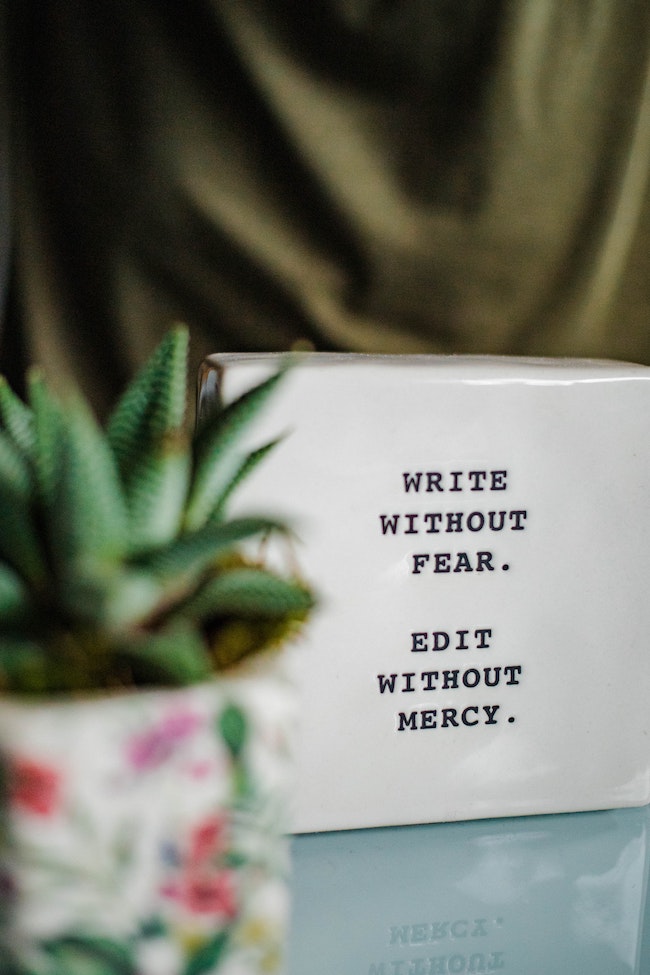
You’ve done it. You’ve finally completed a draft. You think it might be ready for publication, but you’re not so sure. What’s a writer to do?
Here’s your introduction to the wide world of beta readers—people who can help you polish your work to perfection before you post or publish.
What a Beta Reader Is and Isn’t
A beta reader is someone who provides detailed feedback on a finished, unpublished draft from a reader’s perspective.
This means a beta reader is not any of the following:
Someone who is reading an in-progress draft and providing feedback on a scene by scene or chapter by chapter basis. This niche is typically occupied by a critique partner or group. These people are not as likely to provide their feedback as readers, but from a writer’s perspective. It’s less about the generalities and more about specific details.
Someone who is reading a published piece. This stage is for reviewers and commentators. Except in certain blogs or online media, changes in response to reviews/comments are fairly rare. This is “after the fact” feedback.
Someone who is reading your story who provides vague, over-generalized feedback like: “I really enjoyed it” or “I didn’t like it that much”. This kind of respondent might present as a beta reader initially, but their feedback proves otherwise. Essentially, generalized responses are too vague to be useful in editing. Fortunately, there is a way to convert these “vague-tas” to true beta readers, as we’ll discuss later in the article.
Where to Find Beta Readers
Beta readers can come from almost anywhere, but the following places are good starting points:
- Your family and friends
- Your local community
- Fellow writers
- Online groups
Your family and friend network is a natural choice for finding beta readers. If someone in your family loves reading the genre you write in, ask them to read over your draft. If a friend of yours is the living image of your target audience, see if they would read.
However, keep these potential cons in mind. First, family and friend readers come in two varieties: absolutely reliable and absolutely unreliable. Either they will read every line of your book and answer every question, or they won’t read any of it. Second, make sure you’re comfortable sharing your work with non-writing family and friends. Because you have a close relationship, it may be hard for your beta-reading family member or friend to provide neutral feedback. They may also recognize characters “inspired by” mutual acquaintances.
In your local community, look for events frequented by readers of your genre and get involved. Writing science fiction or fantasy? Get involved in the local comic-con community. Working on a literary piece? Try book clubs. Mystery writer? Look for murder mystery dinner groups. The possibilities are endless.
The caveat here is that you must be involved in these groups for more than the purpose of finding beta readers. So try to find events or groups that align with your personal interests, get to know the people involved fairly well first, then began canvassing for beta readers.
You might be wondering: if beta readers provide feedback from a reader’s standpoint, does that mean my writing friends can’t be beta readers?
Absolutely not! Your fellow writers will typically make excellent beta readers because they can give you their perspective both as a reader and as a writer. Sometimes these dual insights can be helpful to identify a crutch you’re using that an "ordinary" reader might not quite articulate. For best results, ensure you’ve asked them to put on their “reader’s hat” rather than their “writers hat” when providing feedback. These roles are never completely inseparable, but a writer reading as a reader will generally provide better feedback.
Also establish some boundaries for beta reading. Writers may be more heavy-handed on providing feedback than other readers. They may rephrase sentences or even rewrite entire sections. While a new perspective can prove invaluable, these rewrites are a double-edged sword. To prevent bruised egos, establish a baseline of what’s acceptable and what’s not, even if that’s an agreement of: “Consider my thoughts on how I would do this, not an absolute you must do it this way.”
If the first three categories aren’t quite a match for finding readers, you’re still in luck. With the advent of new online writing communities, there are more opportunities than ever to find readers. The following sites are excellent resources to explore:

Selecting Beta Readers
Once you know where to find your beta readers, it’s time to select them. You want to look for beta readers who:
- Read and enjoy your genre
- Can commit with relative certainty to a given word count and timeframe
- Are willing to answer questions and engage in a bit of back-and-forth on their comments
- Can be trusted with your work
Notice being part of your target audience isn’t part of the criteria. Yes, it’s excellent to have beta readers within your target audience. However, only focusing on those readers will eliminate other perspectives. You may find your target audience is wider than you think.
Of the four reader criteria, the first and last are the most important. If a reader wouldn’t at least consider picking your story up in a bookstore and buying it, their feedback isn’t helpful. It’s a bad story-reader fit. At best, you’ll receive lukewarm commentary and at worst, you’ll get comments that convince you to change integral parts of your story that shouldn’t be changed.
Trust is the other major element to beta reading. If you don’t feel that someone’s commentary is provided to genuinely improve your story, it will color your perspective on every comment they make. Suddenly, an inane critique becomes a major blow and a less-than-considerately worded comment sends you into a rage.
A lack of trust will close you off to potentially good feedback, whereas true trust will help you absorb even harsh but helpful critiques. Instead of becoming defensive, you’ll be able to look at it more objectively.
How many beta readers should you select? There’s no perfect number for each draft. It’s a balance. You want to have enough readers to account for people dropping out halfway through your round, but not so many that you’re overwhelmed by feedback or no longer have any new readers to work through subsequent draft rounds. Pick potential readers accordingly.
Once you’ve made your selection, it’s time to move onto the reading process.
The Process of Beta Reading
Surprisingly, the process of beta reading starts far before the reader has the draft in their hands. There’s a bit of prep work upfront needed to ensure a successful round.
First, pick your time window. For article-length pieces, this can be anywhere between one day and two weeks. But for novel-length works, between six and twelve weeks is best, depending on the length of your draft.
Set your deadline appropriately and decide whether it’s an absolute or flexible. If it’s an absolute, make your potential beta readers aware that they must have their comments to you by this date. If there’s flexibility, provide them with a range you’d like to have the feedback back within.
After setting your reading window, you need to decide how you want to receive your feedback. Will you do it through comments on a Word document you’ve emailed? Through a cloud-based service like Dropbox? Or plain paper and pencil? Let your readers know about the delivery method you’ve chosen, but try to be flexible to meet their requirements. Some readers must have a physical copy, others won’t read anything but digital. Keeping options open to readers will widen your available pool. Simply be prepared to print or format your drafts to adapt.
Next, draft questions to ask your beta readers about your work. This can be general questions about the entire work or chapter-specific questions. Questions can be a great way to get more detailed feedback from beta readers who tend to be vague. But try not to overwhelm your readers with too much—save detail-oriented questions for your most important checks.
For examples of questions to ask your readers, check these sources:
- 5 Key Questions to Ask Your Beta Readers
- 10 Questions to Ask Your Beta Readers
- What to Ask Your Beta Reader
- 15 Questions to Send Beta Readers
You can then provide the entire list of questions to readers ahead of time for them to look over before reading. If your questions contain spoilers, make them chapter-specific to be answered after the relevant section has been read.
Prepare a sample to provide to new-to-you beta readers, similar to those you would provide to agents or publishers. The sample can be anywhere between the first ten to fifty pages of your work, whatever you feel will give you the best assessment of the story/reader fit. It should always be a separate document from your larger draft.
Now, it’s time to talk with your potential readers. Let them know that you’re looking for beta readers to read your piece by the deadline you’ve chosen. For readers you’ve worked with as critique partners, or readers you know will provide good feedback, you can hand over the full draft as soon as they commit. For readers you’re getting to know better first, consider using your sample. Ask if they would read and comment on it to ensure they’re interested in the story. Give a deadline. Once you have their feedback, you can decide whether they can be helpful in the next full round of beta reading.
Don’t burn any bridges if the feedback isn’t quite what you’re looking for. Future drafts may need different types of feedback, and new eyes are always useful. Thank the reader for taking the time to look over your sample, let them know they may be a better fit for a later round and you will let them know as soon as the draft is ready for their style of feedback.
Before you send off your full draft, determine if you’re better sending in sections or as a single document. If you’d like for your readers to check in fairly often, sending in sections may be a better option. But if you’d prefer to “set and forget,” send the full draft.
After you’ve sent the draft off to your selected readers, you’ve reached the hardest part of the process: waiting. The anticipation will be difficult. However, trust your readers and save your check-ins until one-third to one-half of your beta reading period has passed. By the halfway mark, most readers will know whether they’ll be able to meet your deadline or not. Always let readers know at this point that they can drop out if needed, they simply need to inform you.
As your deadline comes closer, you’ll want to check in with your readers a bit more frequently. Depending on the length of your reading period, checking in one month before, one to two weeks before and one to three days before the deadline are all reasonable markers. If readers need extensions, this is the time to work those out.
At your deadline, you should have all the available feedback for the round. Store it together in one or two places if you’re dealing with separate digital and physical copies. Now, block off between a few hours and a few days on your schedule to prepare to sort through the feedback.

The Sorting Process
This is the part where your patience will pay off. Time to comb through the feedback to see what your readers thought.
Gather up all the feedback copies you have in one place, whether that’s stacking binders together or moving files on your computer. For short works, you can dive right in and examine the feedback. But for long works, consider looking only at one section or chapter at a time across each feedback set.
While reading over your feedback, don’t get too caught up in individual comments. Fixating on the comments of one reader may lead to unbalanced changes in your work. If a single comment is particularly insightful, make sure to note it. But feedback sorting is primarily a pattern recognition game.
Look for repeat comments or feedback themes from different readers. If multiple readers make a point, it’s probably representative of how the public (agents and publishers included) will see your work. So if most of your readers absolutely can’t stand a character you wanted them to love, you’ll need to work to correct that disconnect. Same is true of plot holes, logistics issues, or segments in need of reordering. The more readers point something out, the more likely you will need to change it—even if you cringe at the thought of the change.
Make notes on the feedback while you’re reading, writing down any themes or repeat comments you run across. If you’d like to talk over a certain point with a reader further, note it. Include any potential solutions that come to mind to address readers’ problems with the work, but don’t stress over this too much. Give these time to develop while you work on the next draft.
If you’re especially visual, consider using highlighters to categorize feedback, similar to the color coding editing method. This way, you can identify what areas might need work simply be glancing through a few pages.
After sorting through all the feedback you’ve received, you should have an excellent idea of the strong and weak points in your piece. Keep your feedback drafts in a format organized enough to refer back to. This way, when you’re working on your redraft, you can look back on what exactly readers thought of a certain segment or scene.
At this point, it’s just a matter of incorporating the useful feedback. Thank your readers for their time and get to work on editing!
Ultimately, beta reading is an intricate but worthwhile process that can greatly improve your work. And remember, once you’ve found a good beta reader, stay in touch! These relationships are worth their weight in gold and can boost your work to the next level for years to come.

